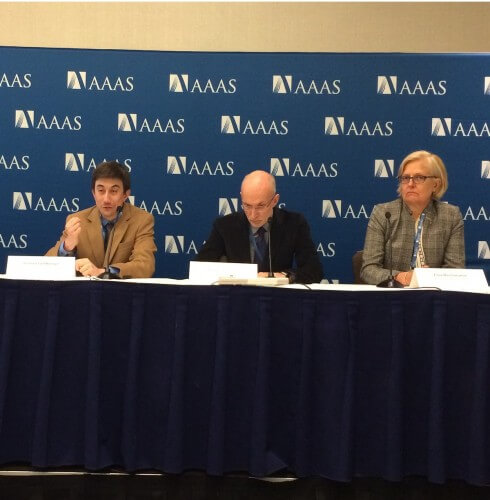This is what Prof. Elsa Reichmanis, from the Georgia Institute of Technology in Atlanta, said in response to the science question

Silicon Valley got its name from the basic material at the heart of the microelectronics industry. For decades, pure crystals of Zorn were the basis for the chips that are the heart and brain of every computer. However, as the chips keep getting smaller and faster, and the number of transistors doubles every two years according to Moore's law, silicon approaches its practical limits.
In response to a question from a Chiportal delegate to the AAAS conference held this week, Prof. Elsa Reichmanis, from the Georgia Institute of Technology, said that in her opinion there will not be a single substitute for silicon. "We may stop the race, as in the past we stopped the race for clock speed, and moved to other methods (multi-core. AB), it is possible that the future will lie in the combination of silicon, in which we have nevertheless gained a lot of knowledge, with other materials, and other nanotechnological solutions . "In any case, the high probability is that the new materials like graphene will be used for new applications, which today cannot be realized using silicon, and the traditional solutions will continue to be based on silicon for some time." Beyond graphene, the scientists are investigating new types of two-dimensional graphene-like surfaces that are also semiconductors , which makes them a natural fit for advanced electronics.
At a press conference held as part of the annual conference of the AAAS - the American organization for the advancement of science (the publisher) of the leading journal Science, Prof. Joshua Goldberg from Ohio University explained that the key to the future of electronics may lie in the material of its past. Goldberg researches the properties of germanium, the material from which transistors were made in the XNUMXs - and how it can be made a substitute for silicon.
Goldberg described a form of germanium known as germanane. In 2013, Goldberg succeeded for the first time in creating a sheet one atom thick from germanium - which can be considered as a two-dimensional shape. Since then, he and his team members have studied the ability of the atoms to form bonds with materials that are above and below the sheet, and to create hybrid versions of the material that combine other atoms. The goal is to create a material that will not only enable electronics 10 times faster than silicon, but will also absorb and diffuse light - a key feature for developing more efficient LEDs and lasers.
Stuart Perkin from the IBM Research Laboratory in San Jose (the host city) described his research into the development of two different devices for future computing that use innovative materials. Nanowires made of magnetic alloys that will be the basis for fast and non-volatile memories based on spintronics. These memories have the potential to greatly achieve the performance of today's storage systems and memory devices - hard disks, flash, DRAM and SRAM).
A new class of oxide metals including vanadium dioxide are at the heart of the development of "inorganic" logic gates composed of liquid ions for switching between states. These gates could be the key to low-power computing systems designed to mimic the human brain.
"Organic materials and polymers for flexible electronics"
Prof. Elsa Reichmanis, from the Georgia Institute of Technology in Atlanta described how printed and flexible electronics have the potential to be a cheap alternative to a variety of devices from energy, through medicine to security. The performance of the devices depends on the combination of semiconductors from the nano level to the macro level.
In order to advance the field, the knowledge about the relationship between process structure and properties of materials must be improved. This combination could lead to the development of plastic-based electronics and for photovoltaic devices.
